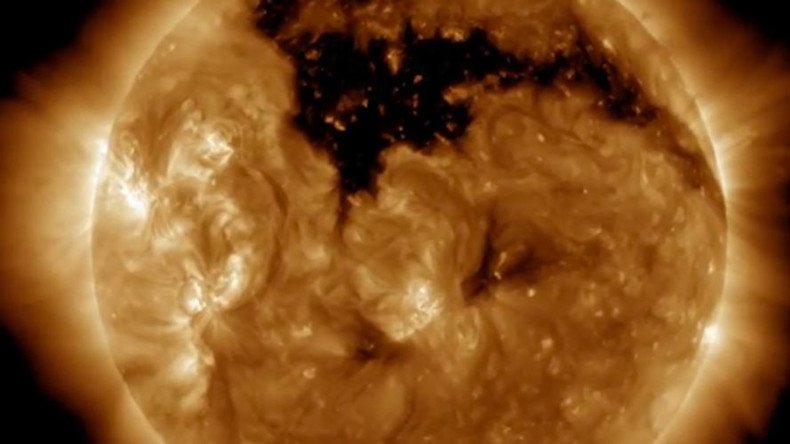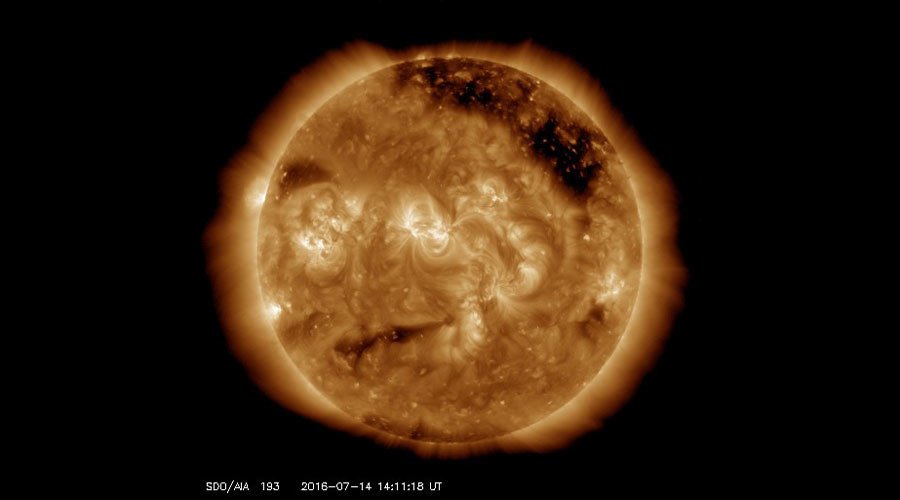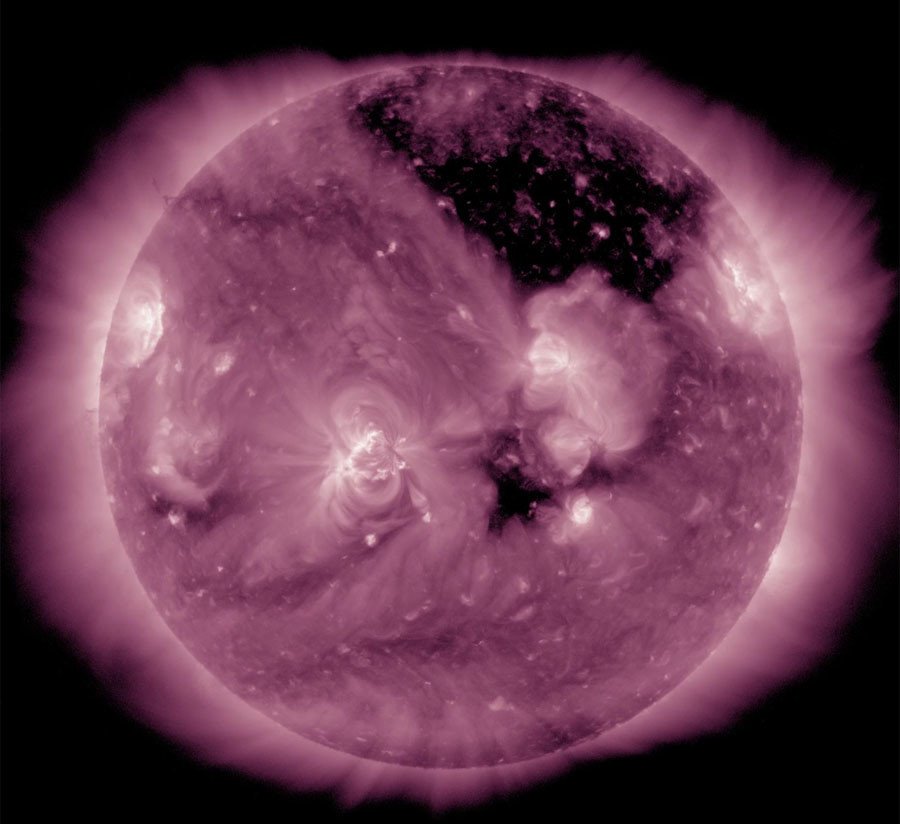NASA discovers giant hole growing on the sun’s surface (VIDEO)

Known as a ‘coronal hole’, the black mass creeping across the sun’s surface has the potential to cause chaos on Earth.
A coronal hole appears on the sun’s corona, or atmosphere, when the sun’s magnetic field opens and allows heat from the corona to be expelled.
The lower temperature of these areas causes them to appear darker than the rest of the sun’s surface. They also have lower energy and gas levels, adding to its dark appearance.
While this sounds pretty terrifying, given the Earth’s dependence on the sun to survive, scientists say this discovery is not a sign of impending doom for either our star or our planet.
Coronal holes appear regularly on the sun’s surface, but this one is much larger than usual. The holes can last for months and can grow to cover up to a quarter of the sun’s surface, according to NASA.

It was spotted by Nasa’s Solar Dynamics Observatory (SDO), which has been monitoring the sun since 2010. The hole on the northern hemisphere was spotted earlier this month by the orbiting telescope.
"Coronal holes are the source of a high-speed wind of solar particles that streams off the sun some three times faster than the slower wind elsewhere," NASA explained.

While a coronal hole doesn’t signal the end of the world, its presence can disrupt satellite and radio communications on Earth, thanks to the solar winds released by the corona.
These winds can meet the Earth’s magnetic field, causing geomagnetic storms which mess with the Earth’s magnetic energy.
Geomagnetic storms do, however, carry the risk of causing havoc on Earth. The most powerful geomagnetic solar storm on record, known as the Carrington Event, took place in 1859. It caused flares so bright that “skies all over planet Earth erupted in red, green, and purple auroras so brilliant that newspapers could be read as easily as in daylight,” Nasa says.
Tatooine +1: Newly-discovered planet with 3 suns facing potential annihilation https://t.co/t3q3ntORufpic.twitter.com/hokpH10whB
— RT (@RT_com) July 8, 2016
Telegraph operators reported sparks flying from their equipment. The southern lights were visible as far north as Santiago, Chile, and the northern lights were seen in Cuba, National Geographic reports.
If a storm of its magnitude were to occur in today’s technology-dependant society, it could have a devastating impact on the internet, GPS, communications, and the electrical grid.












